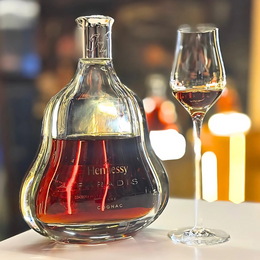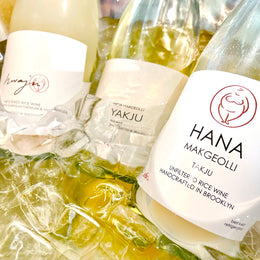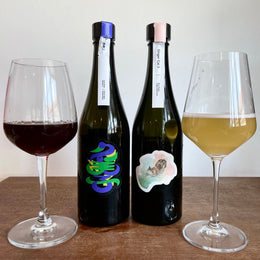
The news of Foursquare’s new Exceptional Cask Selection release, Touchstone reminded me to do this review.
Touchstone is a blend of two single blended rums 14 year old rum. One is aged for 5 years in ex-bourbon casks then 9 years in ex-Cognac casks. The other is rum aged for 12 years in ex-bourbon casks then was transferred into ex-Camus Cognac casks for 2 years.
At the end of 2018, Camus launched an expression aimed at exploring the possibilities of oceanic and tropical aging. They sent 10 casks of 4 year old Cognac to Barbados. They underwent a 45 day maturation at sea. Then the casks were received by Foursquare’s master distiller Richard Seale. After a year of aging in Barbados, the Cognacs were sent back to Camus. But Foursquare kept the 10 casks to age for them to age their rum in.
With there being only 10 casks that were sent to Barbados, only 4500 bottles became available. Also, some of the tropical-aged Cognac were included in a sample set to let some people compare the effects of the expedition with regularly aged Camus Cognac. If you’re curious about this, you can read about it on Cognac Expert's post.

Some of you might be thinking: “What? A Cognac brand toying with the idea of aging at sea? This technique doesn’t sound new. We've already seen Jefferson’s (Ocean) do this. And it wasn’t that good.” You’re correct in thinking that it’s been done by Jefferson’s. But, first, Jefferson’s Ocean didn’t age on a tropical island. Second, they weren’t the first to do it either. A lot of us forget that before glass bottles and IBC containers became the standard container wine, beer, rum and brandy were shipped around in casks. According to Camus, this was the thing for the most of the 1700s and a good part of the 1800s.
I’m sure we’re all already aware of how the tropical climate will affect Camus’ aging. Spirits aged in tropical climates tend to age “faster”, compared to colder (continental) climates since the pores of the cask are more open. Thus leading to more wood interaction. What’s more interesting is Camus tested and compared the Barbados-aged cognac with cognac aged in Cognac via chromatograph. According to them, the experiment shows a more significant aromatic evolution of the liquid.
There’s also mention of an accelerated esterification due to tropical aging. This is something that’s discussed more by the rum folk. Barrel-aging, increases the ester counts in a spirit. Congeners give alcohol its aromas and flavors. Esters is a kind of congener. (Refer to this old article for a deeper dive.) But since tropical aging accelerates barrel aging, the esterification process becomes faster.
If you’re curious about how the ocean voyage affected the cognac’s aging, you can read Camus’ report on it here.
Camus Caribbean Expedition Cognac - Review
45.3% abv. €109 on Cognac Expert. £94.95 on The Whisky Exchange.

Tasting Notes
Color: Mahogany
On the nose: I get sharp but light, coherent and tart aromas of browning bananas, pears, red berries and cherries. Behind them are dry and lighter aromas of leather, dried dates, cacao, cantaloupe melon, orange peel and molasses.
In the mouth: Also sharp and tart but the notes are more expressive. I taste mild and muddled notes of cherries, dried dates, red berries, dried apricots, cantaloupe melons, goji berries, red grape skins, toffee, caramel, caramelized orange peel oil and cacao.
Conclusion
Because there’s no mention of this being their Borderies VSOP, I compared my tasting notes on this to their VSOP Elegance. This Caribbean Expedition is a VSOP since it was aged for 4 years in Cognac before being sent to Barbados.
There are consistent notes, which I think comes from the distillate, such as leather, cantaloupes, toffee, caramel and dried apricots. Yes, the Caribbean Expedition cognac has more aging to it. But I don’t think an extra year of aging alone results in this. Which leads me to think and agree that aging in a tropical climate does wonders. There’s so much more variety and a bit more intense flavor in this Caribbean Expedition.
I hope Camus does this more often. I also hope that other Cognac houses follow suit. Because this can be another trend that’s been not as explored. The only issue I see is that I know there’s a rule in the Cognac AOC that says something like any further aging of Cognac outside of the region can’t be counted on the age expression. Let’s say a VSOP (4 year old minimum) was aged for an extra 6 years outside of Cognac can’t be called an XO. As the XO designation required cognac to be at least 10 years old. So drinkers who only look at age statements may not be drawn to this style.
On a personal note, I’m glad that I live in an era where I’m able to pay attention to the different experimentations being done in the spirits industry. I used to think that using different types of wood was the pinnacle of spirits production. But I’m glad to be so wrong. Now there’s more talk and execution of longer fermentation, using different yeasts and aging in different climates.
Yes, as whisky folk, we learned early on in getting into whisk(e)y that whiskey in Kentucky ages faster than whisky in Scotland because it’s hotter in Kentucky. But few of us get to taste a country’s spirit being aged in a different country. The few I think of are the Heaven Hill bourbon aged in Scotland which were bottled by Cadenheads. There’s the centuries old practice of Caribbean rum being aged in Europe. Now, I’m glad to be able to try a cognac that’s been partially aged in the tropics.
Score: 7/10
|
John is a cocktail and spirits enthusiast born and raised in Manila. His interest started with single malts in 2012, before he moved into rum and mezcal in search of malterntaitves – and a passion for travel then helped build his drinks collection. |







